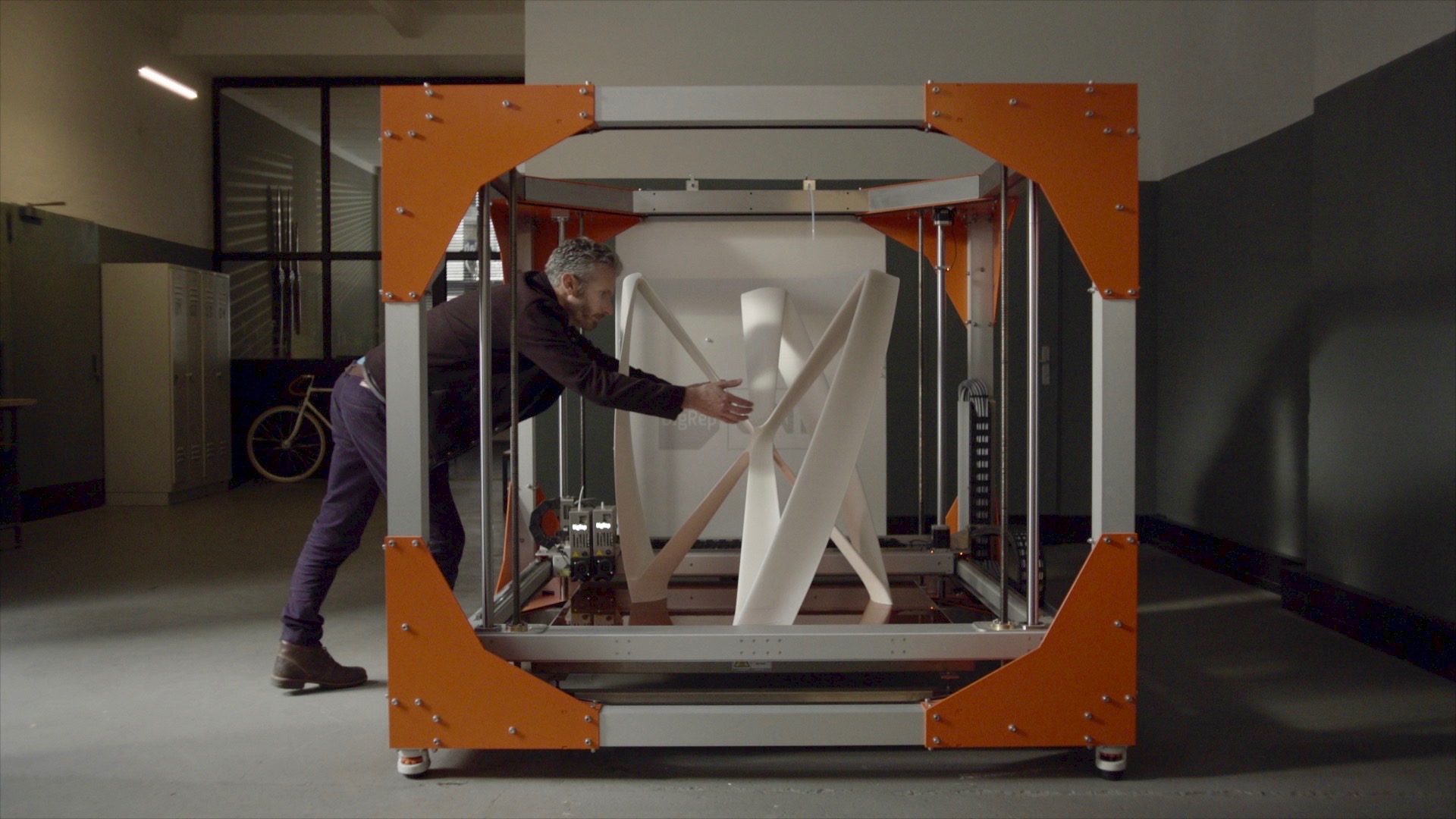E-mobility tech company JAMADE unveiled its new 3D printed underwater scooter, AMAZEA at boot Duesseldorf, the international water sports trade and boat show in Germany. Seventy-five percent of the scooter was additively manufactured using the BigRep ONE.
Redefining maritime vehicle technology with a porpoise
The AMAZEA is a watersports device that pulls a diver through the sea. JAMADE’s designers were inspired by the way a dolphin glides through the water. The AMAZEA’s aims to be an environmentally friendly, emission-free and low-noise device for underwater exploration – coupled with swift fluid motion.

The 3D printed scooter weighs only 25 kg and has a user-friendly control panel. Its electric BI motor drive is powered by two engines, each 3.1 KW each, and a rechargeable lithium-ion battery set up in the scooter’s front. The device can be operated at a depth down to 18 meters. Maximum speed is 20 km/h underwater, or 30 km/h gliding above the water.
The scooter’s body and other structural components are produced using three BigRep ONE large-format 3D printers. Janko Duch, founder of JAMADE said, “We opted for the BigRep ONE due to its cost efficiency, accuracy, and quality when compared to the extremely high investment for traditional tools, particularly in the first year’s lower quantity.” Duch believes that “AMAZEA has the potential to redefine maritime vehicle technology and the consumer experience in water sports around the world.”
JAMADE uses BigRep’s Pro HT filament as it is suitable for marine environments with a softening resistance up to 115 °C, which offers a significant increase in temperature resistance, as well as minimal warping and shrinkage. Pro HT also matches the environmentally friendly concept of the product for the filament is CO2 neutral and biodegradable under the correct conditions. In addition, the large-format printing ensures the scooter’s water-resistance, considering that if it was assembled using several smaller parts, openings would be a potential risk for leaks.
3D printing into the serial production
High flexibility, speed, time and cost efficiency, and operational reliability are among the pros offered the 1m 3 print volume BigRep ONE 3D printer. Martin Back, Managing Director of BigRep said, “This scooter is a BigRep showcase of our digital solutions empowering production by leveraging the full potential of large-format 3D printers with high-performance filaments.”

Also, 3D printing as a manufacturing choice permits further customization, like changes in size or shapes, as well as customer feedback or requests, are able to go straight into the product. Back adds,
“The project also signifies the rapid progress of 3D printing into the serial production of consumer end products, opening a new dimension for AM in similar niche but high-tech markets as well.”
For the first year, a three-digit number of AMAZEA scooters are scheduled to be additively manufactured. The price of the scooter is EUR 7950.
Under the sea with 3D printing
To discover the underwater world, a Loughborough University design student Archie O’Brien also used 3D printing technology for his patent-pending jetpack. The prototype is assembled from approximately 45 3D printed parts, the majority of were made out of PLA plastic on an FDM 3D printer. The impeller, crucial to pumping water and propelling the wearer forward, was 3D printed through 3D Hubs using SLS technology and a carbon-fiber-reinforced polymer for extra strength.
Russian para-athlete, Dmitry Pavlenko was assisted by 3D printing technology during his record-breaking dive in Egypt’s Red Sea. Pavlenko used a 3D printed buoyancy lever to control his air-circulation valves.
Stay up to date with the latest innovations by subscribing to the free 3D Printing Industry Newsletter. To be the first with the news, like us on Facebook and follow us on Twitter.
If you are looking for experts in additive manufacturing or you would like to apply for a role in the industry, take a look at the 3D Printing Jobs board.
Featured Image shows AMAZEA underwater scooters. Photo via Jürgen Scheunemann.


